L’artista greco stefanos ha elaborato un modo interessante per esprimere la propria insoddisfazione nei confronti delle istituzioni europee.
Il suo intervento consiste nel modificare le banconote, dipingendo in inchiostro nero figure angoscianti, emblematiche della situazione in cui versa il suo paese. Le banconote così modificate vengono poi scannerizzate per documentazione e rimesse in circolazione.
In una intervista ha dichiarato
Observing the euro banknote landscapes one notices a lack of any reality, whatsoever for the last five years the crumbling greek economy has hatched violence and social decay – so, I decided to fuse these two things. Through hacking the banknotes I’m using a european a document, that is in cross-border circulation, including greece – thus, the medium allows me to ‘bomb’ public property from the comfort of my home.
Altri esempi sono visibili qui.
Vedi anche qui. La pagina è in greco, ma ci sono delle belle foto.

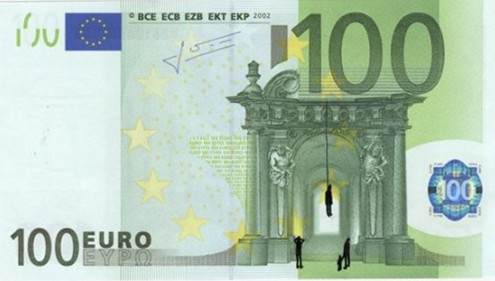
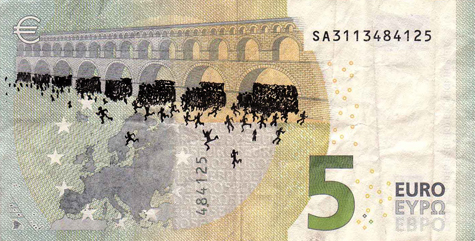
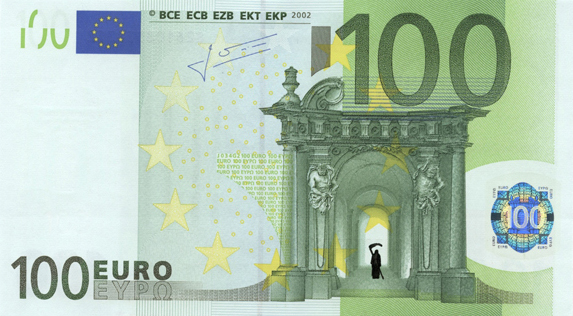
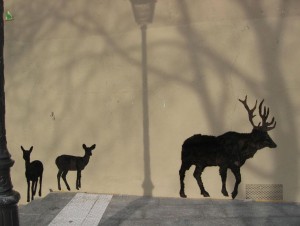
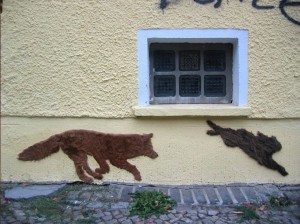
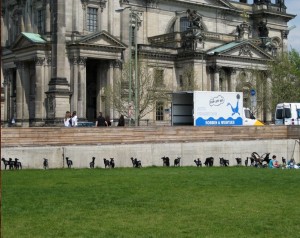
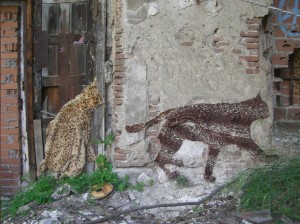
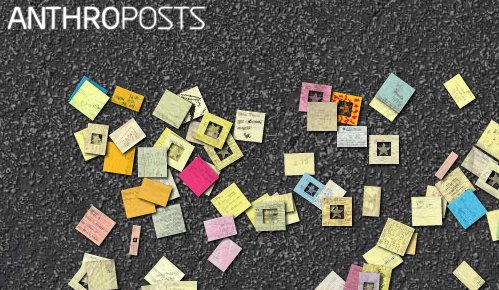
 At the core of “Suomenlinna Ornithological Society” is the invention of new bird species with electronic birdsongs. The concrete sources of these birdsongs are samples taken from a Suomenlinna museum film about the history of the island. Explosions, cannonball whistles, and grisly vocal narrations are re-shaped into the rhythms, timbres and frequencies of birdsong. This transformation references the Electronic Voice Phenomenon (EVP), a supposedly paranormal occurrence where voices of the dead are heard via electronic technology.
At the core of “Suomenlinna Ornithological Society” is the invention of new bird species with electronic birdsongs. The concrete sources of these birdsongs are samples taken from a Suomenlinna museum film about the history of the island. Explosions, cannonball whistles, and grisly vocal narrations are re-shaped into the rhythms, timbres and frequencies of birdsong. This transformation references the Electronic Voice Phenomenon (EVP), a supposedly paranormal occurrence where voices of the dead are heard via electronic technology.
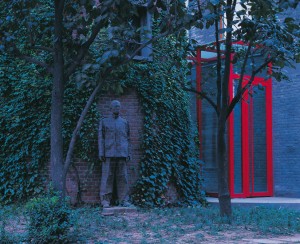




 In Giappone la gru è un animale mistico e si dice che possa vivere per 1000 anni.
In Giappone la gru è un animale mistico e si dice che possa vivere per 1000 anni.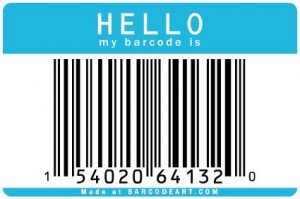
 Questa è decisamente notevole. Una grande idea di Craig Giffen. Sono rimasto colpito a guardare la pagina per un bel po’ (sì, sono affascinato dagli orologi almeno quanto gli antichi cinesi, anche se li odio (gli orologi, non i cinesi), così come odio il tempo che passa).
Questa è decisamente notevole. Una grande idea di Craig Giffen. Sono rimasto colpito a guardare la pagina per un bel po’ (sì, sono affascinato dagli orologi almeno quanto gli antichi cinesi, anche se li odio (gli orologi, non i cinesi), così come odio il tempo che passa).